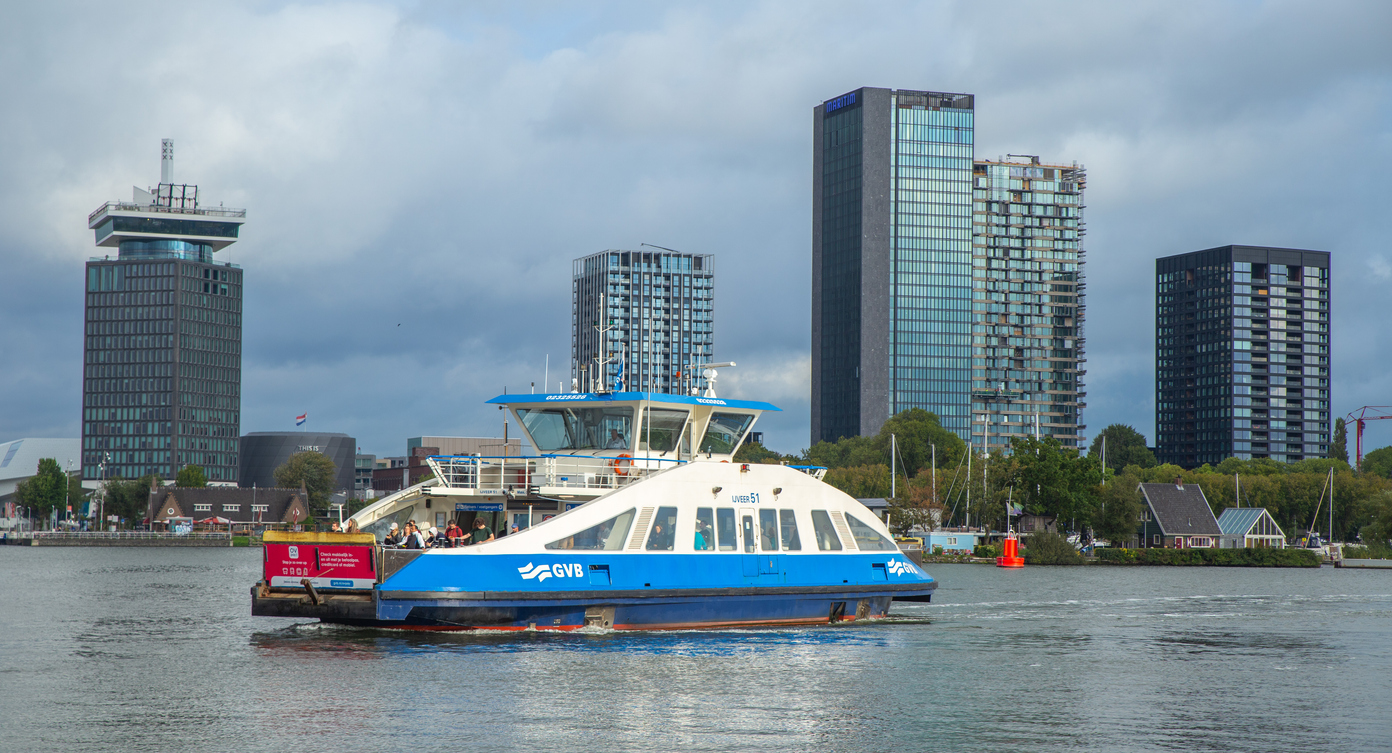Do you need to cross the North Sea Canal with your bicycle, car, motorcycle, moped or simply on foot? And do you want to do so sustainably? Well you can, from the fourth quarter of 2021! That’s when the City of Amsterdam, together with public transport company GVB, is going to start operating up to 5 new ferries. All-electric ferries to be exact. They contacted DWG and asked us to provide the software to control and monitor the systems between the rectifier station and GVB’s operations centre for the electric ferries. How did we approach this? Read more in this article.
A sustainable crossing
The current ferries on the North Sea Canal have been operating since the 1930s. All day and every day. You could say that they are ready for a well-earned retirement. So they will soon make way for 5 new, electric ships. The first new ferry will start sailing between Velsen and IJmuiden in the fourth quarter of 2021. Next, new ferries will be added in phases between Buitenhuizen-Assendelft and Amsterdam-Zaandam. These electric ferries are one of the measures chosen by the City of Amsterdam and GVB to achieve their goal of becoming more sustainable and emitting fewer pollutants. Good job!
Foolproof (and waterproof) software for control and monitoring
DWG was also invited to contribute to this progressive and sustainable project. We supplied the software to control and monitor the systems between the rectifier station and GVB’s operations centre for the electric ferries. There was one key requirement: we had to integrate our software with GVB’s HMI/SCADA system. Part of the rectifier station for the ferries is operated from this control station. We wrote software to extend the current application. In addition, we developed a remote 4G connection with an extensive range in order to control all the rectifier stations for the ferries. Without using a single item of wired infrastructure.
Before the first electric ferry docks...
The first electric ferry will officially go into operation in the fourth quarter of 2021. But before that happens, we will test, retest and test yet again. Of course, we will conduct all the required tests internally at DWG first. Then we will repeat those tests together with our customer, the end customer and the end users. At the work site itself, we will perform a site acceptance test (SAT). The purpose of this testing phase is to explain all the functionality and test operation. And, as icing on the cake during the SAT, the ferry will dock at the quay and be connected to the charging station. Our software engineers will double-check everything to make sure that the system works perfectly and GVB’s operators will assess whether the right signals come in on their HMI/SCADA workstation.
Interested in a meeting? We'll be happy to oblige!
Are you looking for software or hardware specialists? Or a consultant who takes the time to help you get to the bottom of your issues? We would love to hear your story! Simply contact us for a productive meeting over coffee.



